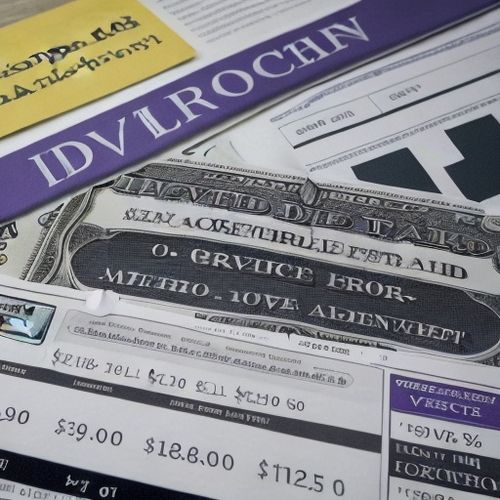In the aftermath of the 2008 global financial crisis, quantitative easing (QE) emerged as a radical yet indispensable tool for central banks to stave off economic collapse. By purchasing government bonds and other assets, institutions such as the Federal Reserve, the European Central Bank (ECB), and the Bank of Japan injected unprecedented liquidity into markets, suppressed long-term interest rates, and restored investor confidence. Over a decade later, as economies rebounded and inflation resurged, policymakers faced a new challenge: unwinding these bloated balance sheets without triggering market turmoil. The process of QE exit—often described as “tapering” or “balance sheet normalization”—has repeatedly proven fraught with risks, from abrupt asset repricing to geopolitical spillovers. This article explores the delicate balancing act central banks must perform when exiting QE, analyzes historical precedents and contemporary strategies, and assesses the systemic vulnerabilities exposed during this transition.
Historical Precedents: Lessons from the Taper Tantrum
The term “taper tantrum” entered the financial lexicon in 2013 when then-Fed Chair Ben Bernanke hinted at reducing the pace of bond purchases. Global markets convulsed: U.S. Treasury yields surged sharply, emerging market currencies plummeted, and equity volatility indices spiked. This episode underscored how markets, conditioned to rely on cheap liquidity, could react violently to even subtle shifts in central bank rhetoric. The Fed’s eventual exit from its multi-trillion-dollar balance sheet proceeded more smoothly, but only because it was meticulously communicated and executed alongside gradual rate hikes. In contrast, the ECB’s attempt to taper its asset purchase program faced immediate pushback from weakening Eurozone growth, forcing a reversal within months. These cases highlight a critical paradox: markets demand clarity on exit timelines but punish central banks for adhering to rigid schedules when economic conditions shift.
Diverging Central Bank Strategies in a Multipolar World
Post-pandemic QE unwinding has unfolded amid unprecedented divergence among major economies. The Federal Reserve, confronting historic inflation, embarked on aggressive balance sheet reduction, allowing bonds to mature without reinvestment. Meanwhile, the Bank of Japan continues to cap bond yields under its yield curve control framework—a quasi-QE stance that complicates global capital flows. The ECB’s path has been particularly complex: having expanded its balance sheet to a significant share of Eurozone GDP, it faces pressure to normalize policy while member states remain dependent on bond-buying support. Such policy asymmetry creates cross-border volatility, as seen when Fed tightening pulled capital from European markets, weakening the euro and forcing rapid rate hikes that exacerbated recession risks. Emerging market central banks, lacking advanced economies’ liquidity advantages, often deploy measures such as foreign exchange interventions or yield curve adjustments to mitigate QE spillovers.
The Psychology of Market Dependency and Withdrawal
QE’s enduring legacy lies in its transformation of investor psychology. Years of asset purchases conditioned markets to view central banks as perpetual buyers of last resort, compressing risk premiums and inflating valuations across asset classes. The withdrawal of this support forces a fundamental repricing of risk. The combined impact of quantitative tightening (QT) and rate hikes erased trillions from global stock markets, with technology firms that thrived on low rates suffering historic losses. Corporate bond markets faced similar stress, as refinancing costs surged to crisis-era levels. Behavioral factors amplify these shifts. The “wealth effect” that boosted consumer spending during QE reverses during unwinding, as households facing portfolio losses curb expenditures. Algorithmic trading models optimized for QE-era patterns can exacerbate selloffs when liquidity conditions change. Most critically, erosion of central bank credibility—if markets perceive exits as poorly timed or communicated—can spark self-fulfilling liquidity crises, as seen in abrupt market collapses following simultaneous fiscal and monetary tightening.
Emerging Markets: Frontline of QE Unwind Pressures
For developing economies, QE exits in advanced economies often act as economic earthquakes. The reversal of capital flows toward higher-yielding assets weakens emerging market currencies, forcing painful rate hikes to curb inflation and prevent defaults on foreign-denominated debt. During recent tightening cycles, several nations defaulted on sovereign obligations, while others saw currencies depreciate sharply despite international bailouts. Countries with robust reserves and domestic investor bases fared better, leveraging local financial depth to absorb external shocks. However, systemic risks persist. Emerging markets face massive external debt maturities in coming years—refinancing that must occur amid higher global rates and diminished risk appetite. Multilateral institutions have introduced tools to stabilize markets, but their capacity to prevent cascading defaults remains untested at scale.
Unintended Consequences for Financial Market Structure
QE’s prolonged implementation altered financial ecosystems, creating dependencies that complicate exits. In some economies, central banks’ dominance as bond holders has eroded market liquidity, raising concerns about price discovery during unwinding. Years of corporate bond purchases distorted credit markets, suppressing yields for large issuers while starving smaller firms of capital. Mortgage-backed securities markets face parallel distortions, with central bank holdings reducing volatility but leaving markets vulnerable to forced selling during QT. Shadow banking sectors add complexity, as critical funding markets became reliant on QE-driven liquidity. Meanwhile, cryptocurrency markets—once touted as QE-proof alternatives—proved correlated with traditional assets during liquidity crunches, dispelling notions of decoupling.
Innovations in Exit Strategies: From Passive Runoff to Asset Sales
Acknowledging these risks, central banks are refining exit approaches. Passive QT allows maturing bonds to roll off without active sales, minimizing market disruption. Hybrid strategies combine bond sales with temporary liquidity injections to stabilize markets during crises. Some institutions experiment with targeted reductions in specific asset holdings while maintaining broader balance sheet stability. Radical proposals include aligning QT with climate goals or issuing central bank debt to drain liquidity indirectly. Private-sector solutions are emerging, including financial instruments designed to hedge QT risks and predictive models for stress points. However, all innovations operate within markets still shaped by QE’s legacy, where normalization remains a theoretical challenge rather than a proven outcome.
The exit from quantitative easing represents one of the most complex policy transitions in modern financial history—a high-stakes endeavor requiring central banks to drain trillions in liquidity without destabilizing the markets they rebuilt. While historical taper episodes offer guidance, the current scale of balance sheet expansion and entanglement with geopolitical crises render past strategies insufficient. Success depends on transparent communication balancing market expectations with policy flexibility, international coordination to mitigate cross-border spillovers, and structural reforms reducing economies’ reliance on monetary stimulus. As global challenges redefine economic fundamentals, QE unwinding may require temporary liquidity support to manage transition shocks. Ultimately, the true test lies not in avoiding short-term volatility—some repricing is inevitable—but in fostering resilient financial systems capable of thriving without central bank life support. Policymakers must balance the urgency of normalization with the patience to let markets rediscover equilibrium, a process measured not in quarters but in decades.

By Noah Bell/Mar 30, 2025

By Christopher Harris/Mar 30, 2025

By Benjamin Evans/Mar 30, 2025

By Victoria Gonzalez/Mar 30, 2025

By Daniel Scott/Mar 30, 2025

By Ryan Martin/Mar 30, 2025

By Sarah Davis/Mar 30, 2025

By Samuel Cooper/Mar 30, 2025

By Jessica Lee/Mar 30, 2025

By Jessica Lee/Mar 30, 2025

By Christopher Harris/Mar 30, 2025

By John Smith/Mar 30, 2025

By Ryan Martin/Mar 30, 2025

By Amanda Phillips/Mar 30, 2025

By Eric Ward/Mar 30, 2025

By Emily Johnson/Mar 30, 2025

By Amanda Phillips/Mar 30, 2025